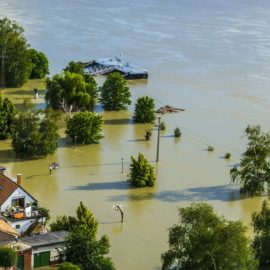
The Advocate staff opinion today recognizes that money is now available to make a dent in the coastal protection we need.
For most of the years he’s worked on saving coastal Louisiana, Chip Kline has been losing — or playing defense, at best. Listen to him today: “We are now at a point to win the battle on many fronts.” It is a remarkable turnaround, and one that is hopeful for the many different ways that Louisiana has been seeking to preserve itself against wind and waves from the Gulf of Mexico. Kline’s Coastal Preservation and Restoration Authority is the agency that will take the lead in spending $1.3 billion in the coming state fiscal year on projects aimed at advancing both shoreline protections and marsh preservation.
theadvocate.com
This is a lot of money but more will be coming meaning more can be done.
But as significant as that investment is, federal spending will be coming in support of the state coastal program in even larger amounts. The U.S. Army Corps of Engineers has been allocated another $2.6 billion for various projects, much of it from a supplemental appropriations bill that also delivered desperately needed hurricane relief money to Louisiana. The Louisiana delegation in Congress has strongly supported coastal aid for years and deserves credit for these advances in Corps funding. But the state’s endangered coastline will also benefit greatly from the passage of the Biden administration’s infrastructure bill, which most of the Louisiana delegation voted against; the party line seems to trump local interests in Washington these days. The infrastructure bill, in large part crafted in a bipartisan fashion by U.S. Sen. Bill Cassidy, R-Baton Rouge, also contains the potential for funding future work to protect Louisiana’s coastline. It’s not “free” money, as various projects will require state matching funds or local commitments of land or cash, but the CPRA and the Corps work closely together to make the numbers work. Gov. John Bel Edwards also proposed to the Legislature an additional $150 million for coastal projects from surpluses in the state budget.
A mild rebuke to those who voted against the infrastructure bill but still a rebuke on politics over need. Deepwater Horizon money is still being spent.
For this year, the state funding — a lot of it from penalties levied after the Deepwater Horizon oil spill of 2010 — is the fastest to get onto the ground. Among the major improvements in the coastal zone will be the mid-Barataria diversion of Mississippi River water into endangered wetlands. That is somewhat controversial in the southeastern part of the state. But it is a major element in restoring sediments to the coastal areas that have eroded over many years, since levees restricted the river’s flow. Other projects include levees to protect parishes along the river and a floodwater diversion on the Comite-Amite river basin in Baton Rouge. All across the state’s coast, Kline told the Press Club of Baton Rouge last week, projects to prevent erosion and build back wetlands are going to be funded through multiple sources this year and in years to come. The latter is a point to note: The Corps and a dilatory Congress have delayed for many years the completion of the Comite diversion canal. Much work by state officials lies ahead to keep things on track.
It takes an optimist to believe that work can really be done to help.
Kline is an unnatural optimist, having faced the steady retreat of the coastline for years. And he says that even with the projects now funded and coming in future years, Louisiana will never see a day when protecting its coastline is not an urgent priority. So if not a turning point, this year’s coastal projects are at least a dramatic departure from the past, and very welcome in Louisiana.
Maybe the Advocate is now a supporter and at some point might accept the damage done by the oil, gas and chemical companies. That would be very welcome in Louisiana.



